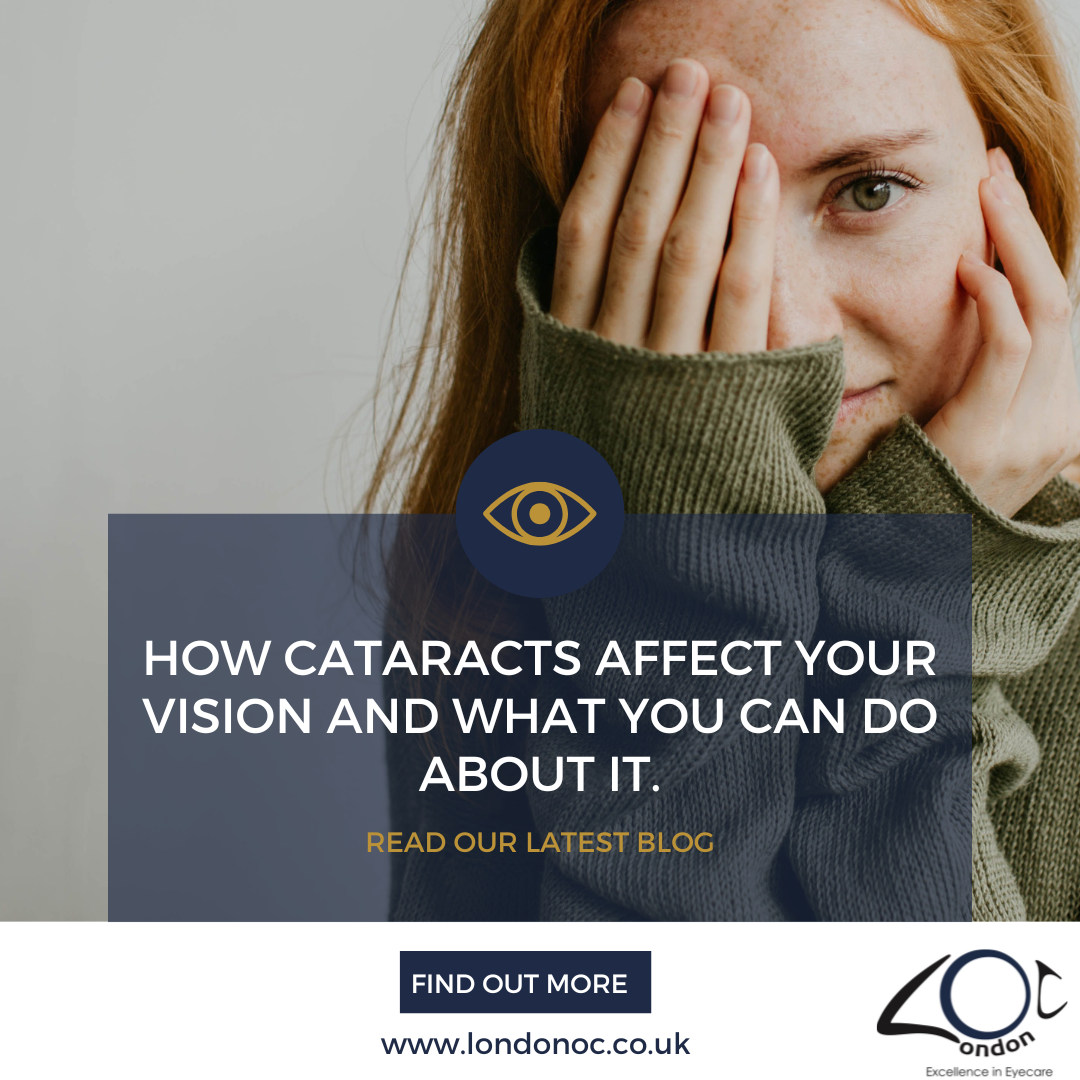Cataracts are a common eye condition that can significantly impact your vision and quality of life. They occur when the natural lens of the eye becomes cloudy, making it difficult for light to pass through clearly. While this condition is most often associated with aging, they can also result from injury, certain medical conditions, or prolonged exposure to ultraviolet (UV) light. Understanding how this condition affects your vision and knowing the treatment options available can help you take control of your eye health.
How cataracts affect your vision
The lens in your eye is normally clear, allowing light to focus properly on the retina for sharp vision. When cataracts form, the lens becomes cloudy or opaque. This cloudiness scatters and blocks light, leading to blurry or distorted vision.
Symptoms of cataracts
Cataracts develop gradually, and symptoms may vary depending on the severity and stage of the condition. Common signs include:
- Blurry or Cloudy Vision: Objects may appear hazy or out of focus.
- Sensitivity to Light: Bright lights or glare, especially from the sun or headlights, can become uncomfortable.
- Poor Night Vision: Difficulty seeing in low-light conditions or at night is a common complaint.
- Faded colours: colours may appear dull or less vibrant over time.
- Frequent Prescription Changes: You may find yourself needing new glasses or contact lenses more often than usual.
If left untreated, cataracts can progress, eventually leading to significant vision impairment or blindness.
What causes cataracts?
Cataracts can result from various factors, including:
- Aging: The most common cause, as the proteins in the lens naturally break down over time.
- Injury: Trauma to the eye can disrupt the lens's clarity.
- Medical Conditions: Diabetes and certain eye diseases increase the risk.
- Lifestyle Factors: Smoking, excessive alcohol consumption, and prolonged UV exposure can contribute to cataract development.
- Genetics: A family history of cataracts can also increase your risk.
What you can do about cataracts
Early detection and monitoring
Regular eye exams are essential for detecting cataracts in their early stages. An optometrist or ophthalmologist can evaluate the clarity of your lens and monitor the progression of the condition.
Lifestyle adjustments
While lifestyle changes cannot reverse cataracts, they can help slow their progression and manage symptoms:
- Wear Sunglasses: Protect your eyes from harmful UV rays.
- Maintain a Healthy Diet: Foods rich in antioxidants, such as leafy greens and fruits, may support eye health.
- Quit Smoking: Smoking accelerates cataract formation and other eye conditions.
- Use Adequate Lighting: Ensure proper lighting at home and work to reduce eye strain.
Prescription updates
In the early stages, adjusting your glasses or contact lenses can improve vision. This is a temporary solution as cataracts continue to progress over time.
Cataract surgery
When cataracts begin to interfere significantly with daily activities, surgery is the most effective treatment. During cataract surgery:
- The cloudy lens is removed and replaced with an artificial intraocular lens (IOL).
- The procedure is quick, safe, and highly effective, with most patients experiencing a dramatic improvement in vision.
When to seek help
If you notice symptoms like blurry vision, glare sensitivity, or difficulty with daily tasks, consult an eye doctor. Prompt evaluation and treatment can prevent complications and restore your quality of life.
Conclusion
Cataracts are a common yet manageable condition. Though they can disrupt your vision, early detection, lifestyle changes, and modern surgical options can significantly improve outcomes. Regular eye exams are the key to maintaining your vision and ensuring that cataracts don’t stand in the way of enjoying life to the fullest. If you’re experiencing any symptoms of cataracts, don’t wait, book a consultation with your eye care professional today.
Book in for your consultation here with Mr Vik Sharma, Consultant Ophthalmologist at LondonOC.
